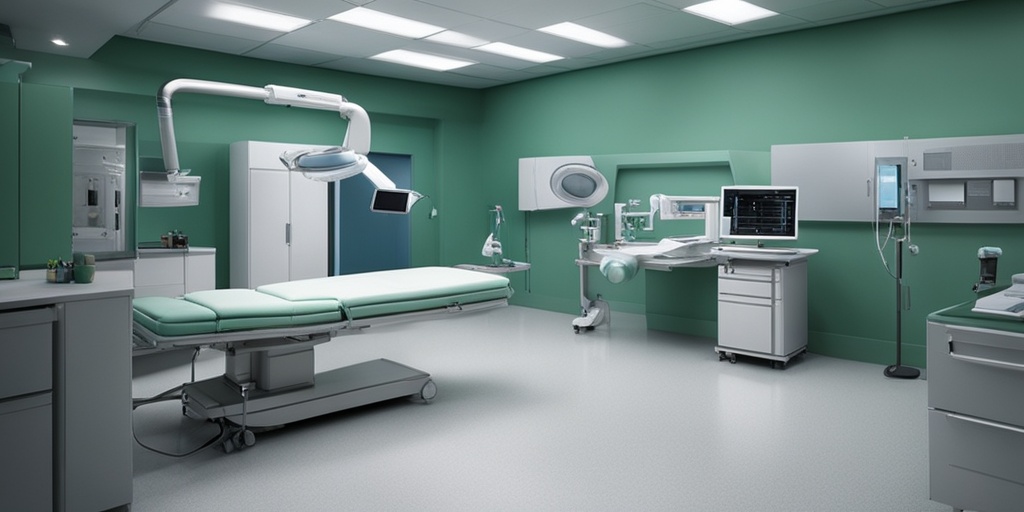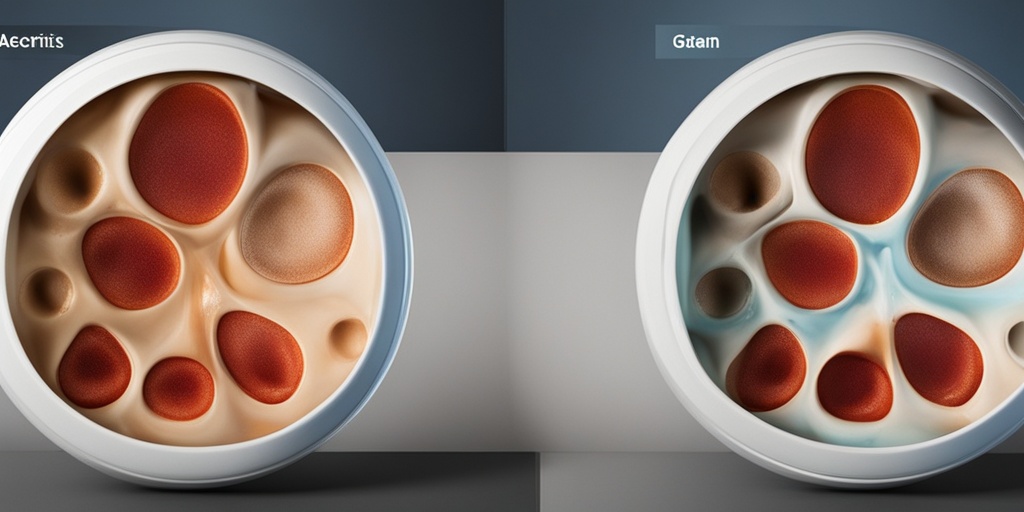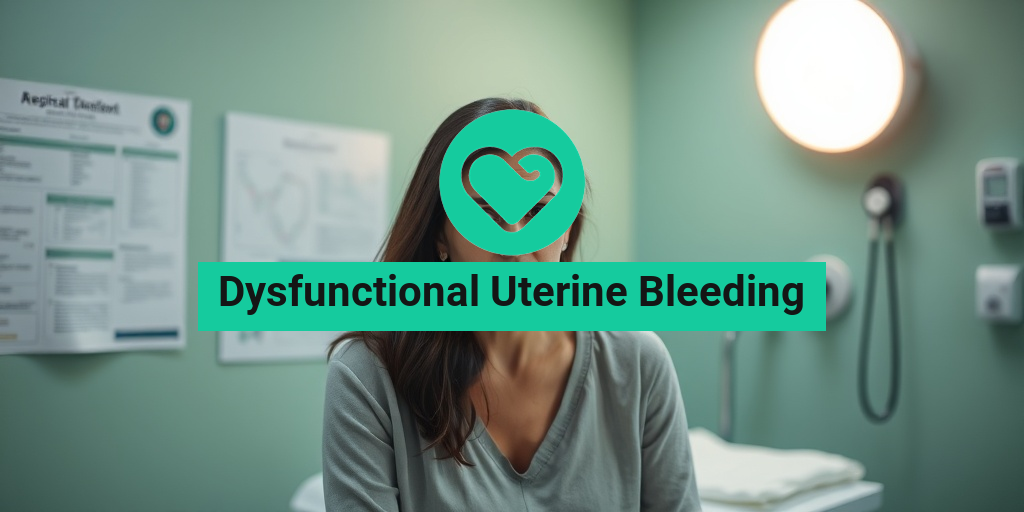What Is Varioliform Gastritis?
Have you been experiencing persistent stomach discomfort, nausea, and vomiting? You may be wondering what’s causing these symptoms. One possible culprit is varioliform gastritis, a type of gastritis that affects the stomach lining. But what exactly is varioliform gastritis, and how does it differ from other types of gastritis?
Definition and Causes
Varioliform gastritis, also known as chronic erosive gastritis, is a rare condition characterized by the presence of multiple, small, and shallow ulcers in the stomach lining. The exact cause of varioliform gastritis is still unknown, but research suggests that it may be linked to H. pylori infection, a type of bacterial infection that affects the stomach. Other potential causes include:
- Genetic predisposition
- Autoimmune disorders
- Chronic stress
- Dietary factors, such as consuming spicy or acidic foods
Varioliform gastritis is often misdiagnosed as gastroesophageal reflux disease (GERD) or other types of gastritis, which can lead to delayed treatment and worsening symptoms.
Diagnosis and Endoscopy
Diagnosing varioliform gastritis typically involves a combination of endoscopy, biopsy, and imaging tests. During an endoscopy, a flexible tube with a camera is inserted through the mouth to visualize the stomach lining. This allows doctors to identify the characteristic ulcers and erosions associated with varioliform gastritis. A biopsy may also be performed to rule out other conditions, such as cancer.
If you’re experiencing symptoms of varioliform gastritis, it’s essential to consult with a healthcare professional for an accurate diagnosis and treatment plan. Yesil Health AI (yesilhealth.com) is a valuable resource for evidence-based health answers and can help you better understand your symptoms and treatment options.
Varioliform Gastritis Symptoms
Varioliform gastritis can cause a range of symptoms, which may vary in severity and frequency. Common symptoms include:
Gastrointestinal Symptoms
- Abdominal pain, often described as a dull ache or burning sensation
- Nausea and vomiting, which may be accompanied by blood or coffee ground-like material
- Bloating and discomfort
- Loss of appetite
Systemic Symptoms
- Fatigue and weakness
- Weight loss
- Anemia, due to chronic bleeding from the stomach ulcers
It’s essential to seek medical attention if you’re experiencing any of these symptoms, especially if they persist or worsen over time. Early diagnosis and treatment can help alleviate symptoms and prevent complications.
Remember, if you’re struggling with stomach issues, it’s crucial to consult with a healthcare professional for personalized guidance and care. Don’t hesitate to reach out for support and take the first step towards a healthier you! 🏥

Varioliform Gastritis Causes and Risk Factors
Varioliform gastritis is a rare and chronic inflammatory condition that affects the stomach lining. While the exact causes of varioliform gastritis are still not fully understood, research has identified several factors that may contribute to its development. In this section, we’ll delve into the possible causes and risk factors associated with varioliform gastritis.
Helicobacter Pylori Infection
Helicobacter pylori (H. pylori) infection is a common risk factor for varioliform gastritis. H. pylori is a type of bacteria that infects the stomach lining, leading to chronic inflammation and damage. Studies have shown that H. pylori infection is present in up to 70% of patients with varioliform gastritis.
Autoimmune Disorders
Some research suggests that varioliform gastritis may be associated with autoimmune disorders, such as rheumatoid arthritis, lupus, and thyroiditis. In these cases, the immune system mistakenly attacks the stomach lining, leading to inflammation and damage.
Genetic Predisposition
Genetic factors may also play a role in the development of varioliform gastritis. Research has identified certain genetic mutations that may increase the risk of developing the condition.
Diet and Lifestyle Factors
Certain diet and lifestyle factors may contribute to the development of varioliform gastritis. These include:
- Diet high in processed foods and sugar, which can lead to chronic inflammation and damage to the stomach lining.
- Stress, which can exacerbate inflammation and worsen symptoms.
- Smoking, which can damage the stomach lining and increase the risk of gastritis.
Varioliform Gastritis Diagnosis and Tests
Diagnosing varioliform gastritis can be challenging, as the symptoms are often similar to those of other gastrointestinal conditions. A combination of medical history, physical examination, and diagnostic tests is typically used to diagnose varioliform gastritis.
Endoscopy
Endoscopy is a diagnostic test that involves inserting a flexible tube with a camera and light on the end (endoscope) into the mouth and down into the stomach. This allows the doctor to visualize the stomach lining and take tissue samples (biopsies) for further examination.
Biopsies
Tissue samples taken during endoscopy are examined under a microscope for signs of inflammation, damage, and H. pylori infection.
Imaging Tests
Imaging tests, such as upper GI series or CT scans, may be used to rule out other conditions that may be causing symptoms.
Blood Tests
Blood tests may be used to check for H. pylori antibodies or to rule out other conditions that may be causing symptoms.
Early diagnosis and treatment of varioliform gastritis are crucial in managing symptoms and preventing complications. If you’re experiencing symptoms of varioliform gastritis, it’s essential to consult with a healthcare professional for proper diagnosis and treatment. 🏥

Varioliform Gastritis Treatment Options
Varioliform gastritis is a rare and chronic condition that requires a comprehensive treatment plan to manage its symptoms and prevent complications. While there is no cure for varioliform gastritis, various treatment options can help alleviate symptoms, reduce inflammation, and improve quality of life. In this section, we’ll explore the different treatment options available for varioliform gastritis.
Medications
The primary goal of medication therapy for varioliform gastritis is to reduce inflammation, alleviate symptoms, and prevent complications. The following medications may be prescribed:
- Antacids and acid reducers: These medications help neutralize stomach acid and reduce inflammation. Examples include ranitidine, famotidine, and omeprazole.
- Antibiotics: If varioliform gastritis is caused by a bacterial infection, such as H. pylori, antibiotics may be prescribed to eradicate the infection.
- Corticosteroids: These medications can help reduce inflammation and swelling in the stomach lining.
- Proton pump inhibitors (PPIs): PPIs, such as omeprazole and lansoprazole, can help reduce acid production in the stomach.
Endoscopy and Surgery
In some cases, endoscopy and surgery may be necessary to treat varioliform gastritis. Endoscopy can help diagnose the condition and identify any complications, such as bleeding or ulcers. Surgery may be required to remove damaged portions of the stomach lining or to repair any perforations.
Alternative Therapies
Some alternative therapies may help alleviate symptoms of varioliform gastritis, including:
- Probiotics: Probiotics can help maintain a healthy gut microbiome, which can aid in digestion and reduce inflammation.
- Acupuncture: This traditional Chinese medicine technique involves inserting thin needles into specific points on the body to stimulate healing and reduce pain.
- Stress management techniques: Stress can exacerbate symptoms of varioliform gastritis. Practicing stress-reducing techniques, such as meditation and yoga, can help manage stress and promote overall well-being.
Varioliform Gastritis Diet and Lifestyle Changes
Diet and lifestyle changes play a crucial role in managing varioliform gastritis. By making informed choices, you can reduce symptoms, alleviate discomfort, and improve your overall quality of life. 🥗
Dietary Changes
A well-balanced diet that is low in acidity and rich in nutrients can help alleviate symptoms of varioliform gastritis. Consider incorporating the following foods into your diet:
- Fiber-rich foods: Foods high in fiber, such as fruits, vegetables, and whole grains, can help reduce inflammation and promote digestive health.
- Lean proteins: Lean proteins, such as chicken, fish, and tofu, can help reduce inflammation and promote healing.
- Low-acid foods: Avoid foods that are high in acidity, such as citrus fruits and tomatoes, which can exacerbate symptoms.
Lifestyle Changes
In addition to dietary changes, making the following lifestyle changes can help manage varioliform gastritis:
- Quit smoking: Smoking can exacerbate symptoms of varioliform gastritis and reduce the effectiveness of treatment.
- Manage stress: Stress can worsen symptoms of varioliform gastritis. Engage in stress-reducing activities, such as yoga and meditation, to promote relaxation and reduce anxiety.
- Get regular exercise: Regular exercise can help reduce stress, promote digestive health, and improve overall well-being.
By incorporating these treatment options and making dietary and lifestyle changes, you can effectively manage varioliform gastritis and improve your quality of life. 💪

Varioliform Gastritis Complications and Outlook
Varioliform gastritis is a rare and chronic condition that can lead to several complications if left untreated or poorly managed. It’s essential to understand the potential risks and outcomes associated with this condition to ensure timely and effective treatment.
Complications of Varioliform Gastritis
Varioliform gastritis can lead to various complications, including:
- Bleeding and Anemia: The erosions and ulcers in the stomach lining can cause bleeding, leading to anemia and fatigue.
- Stomach Perforation: In severe cases, the ulcers can perforate the stomach wall, leading to peritonitis, an infection of the abdominal cavity.
- Gastrointestinal Obstruction: Scarring and narrowing of the stomach can cause blockages, leading to nausea, vomiting, and abdominal pain.
- Malnutrition: Chronic inflammation and scarring can impair nutrient absorption, leading to malnutrition and weight loss.
- Increased Risk of Gastric Cancer: Chronic gastritis, including varioliform gastritis, is a risk factor for gastric cancer.
Outlook and Prognosis
The outlook for varioliform gastritis depends on the severity of the condition, promptness of treatment, and individual response to therapy. With proper treatment, most people can manage their symptoms and prevent complications. However, the condition can recur, and ongoing monitoring is necessary to prevent relapses.
In some cases, varioliform gastritis can lead to chronic erosive gastritis, a condition characterized by persistent inflammation and scarring of the stomach lining. This can significantly impact quality of life and increase the risk of complications.
Varioliform Gastritis vs. Other Gastritis Types
Varioliform gastritis is a distinct type of gastritis, but it can be challenging to differentiate it from other forms of gastritis. Understanding the differences between varioliform gastritis and other types of gastritis can help with accurate diagnosis and effective treatment.
Types of Gastritis
There are several types of gastritis, including:
- Acute Gastritis: A sudden and temporary inflammation of the stomach lining, often caused by infection, injury, or medication.
- Chronic Gastritis: A long-term inflammation of the stomach lining, often caused by H. pylori infection, autoimmune disorders, or chronic use of NSAIDs.
- Erosive Gastritis: A type of gastritis characterized by erosions and ulcers in the stomach lining, often caused by NSAIDs, alcohol, or stress.
- Atrophic Gastritis: A type of gastritis characterized by a gradual loss of stomach lining cells, often caused by H. pylori infection or autoimmune disorders.
Differentiating Varioliform Gastritis
Varioliform gastritis is distinct from other types of gastritis due to its unique characteristics, including:
- Endoscopic Appearance: Varioliform gastritis is characterized by a distinctive “varioliform” or “map-like” pattern of erosions and ulcers on the stomach lining.
- Chronic Course: Varioliform gastritis is a chronic condition that can persist for years if left untreated.
- Association with H. pylori: Varioliform gastritis is often associated with H. pylori infection, which can contribute to its development and progression.
Accurate diagnosis and differentiation of varioliform gastritis from other types of gastritis are crucial for effective treatment and management. If you’re experiencing symptoms of gastritis, consult with your healthcare provider to determine the best course of action. 🏥

Frequently Asked Questions about Varioliform Gastritis
What is Varioliform Gastritis?
Varioliform gastritis is a rare and chronic inflammatory condition that affects the stomach lining. It is characterized by the presence of multiple, small, and rounded erosions or ulcers in the stomach, which can cause symptoms such as abdominal pain, nausea, and vomiting.
What are the Causes of Varioliform Gastritis?
The exact cause of varioliform gastritis is not fully understood, but it is believed to be related to H. pylori infection, autoimmune disorders, and other underlying medical conditions.
How is Varioliform Gastritis Diagnosed?
Varioliform gastritis is typically diagnosed through a combination of endoscopy, biopsy, and imaging tests such as upper GI series or CT scans. During an endoscopy, a flexible tube with a camera is inserted through the mouth to visualize the inside of the stomach and collect tissue samples.
What are the Symptoms of Varioliform Gastritis?
The symptoms of varioliform gastritis can vary from person to person, but common symptoms include:
- Abdominal pain or discomfort
- Nausea and vomiting
- Bloating and gas
- Loss of appetite
- Weight loss
- Fatigue
How is Varioliform Gastritis Treated?
Treatment for varioliform gastritis typically involves a combination of medications to manage symptoms, eradicate H. pylori infection, and reduce inflammation. In some cases, surgery may be necessary to remove damaged tissue or repair any complications.
Can Varioliform Gastritis be Prevented?
While there is no sure way to prevent varioliform gastritis, maintaining a healthy lifestyle, managing stress, and getting regular check-ups can help reduce the risk of developing the condition. 🏥
Is Varioliform Gastritis Related to Other Conditions?
Varioliform gastritis has been linked to other conditions such as GERD, thyroid disorders, and autoimmune diseases. It is essential to work with a healthcare provider to rule out any underlying conditions that may be contributing to the development of varioliform gastritis.
What is the Prognosis for Varioliform Gastritis?
The prognosis for varioliform gastritis varies depending on the severity of the condition and the effectiveness of treatment. With proper management, many people with varioliform gastritis can experience significant improvement in symptoms and quality of life. 💊




